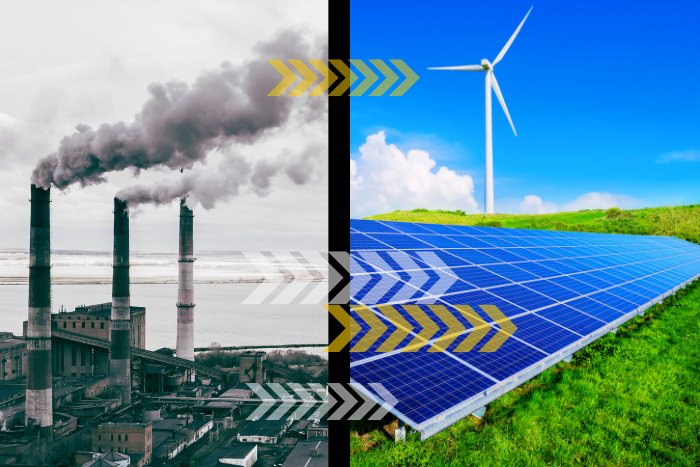To achieve net-zero energy emissions by 2050, the region would need an average annual investment of US$92 billion to expand the clean power supply in the years leading up to 2030
Southeast Asia, one of the most vulnerable regions to climate change, stands at a crucial point where the region must balance the need to promote the growth of clean energy sources while confronting infrastructural and investment constraints.
A recent report has looked at how a way can be paved for a clean power transition in Southeast Asia. The project seeked to identify practical solutions to enhance regional cooperation in the financial, technical, and policy domains to support an ambitious clean power transition in the region by 2030 that aligns better with the Paris Agreement’s climate goals.
The barriers to a clean power transition in Southeast Asia
To achieve net-zero energy emissions by 2050, the region would need an average annual investment of US$92 billion to expand the clean power supply in the years leading up to 2030. This investment requirement surpasses the capacity of the region’s public sector, which has funded most past power projects.
The report noted that increased private sector investment is crucial for turning Southeast Asia’s ambitions for a cleaner electricity future into actual outcomes. Like in many other developing countries, raising enough private capital to finance renewable energy projects in Southeast Asian countries is hampered by a variety of project-specific problems. Such key issues include insufficient grid infrastructure, difficulty in land acquisition, regulatory complexity and uncertainty for project development, etc.
The project-specific issues are often compounded by macroeconomic challenges, undermining risk-adjusted returns for investors and hence limiting the availability of bankable projects. Given these conditions, private investors tend to prioritise renewable energy projects in lower-risk, mature economies, presenting a significant challenge to Southeast Asian countries as they seek sufficient funding to achieve their climate aspirations.
Due to these factors, private investors typically favour renewable energy projects in economies that are more developed and have lesser risk. This poses a big difficulty for Southeast Asian nations trying to find enough money to meet their climate goals.
The report said that despite a global surge in renewable energy investment in recent years, much of the increased investment has been concentrated in advanced economies and China. In contrast, the rest of the world, including Southeast Asia, has contributed only 3% to the overall increase in renewable energy investment since 2019.
Vision for Southeast Asia’s energy sector
The report said that bigger economies like China could collaborate with Southeast Asian countries in developing strategic pilot projects, using them as leverage for greater impact. These project-oriented initiatives should aim to support a rapid deployment of renewable energy projects, customised to local contexts, and seize the opportunities these projects present for local clean industry development. These initiatives are relatively easy to implement, bypassing the difficulties often associated with deeper reforms. Their implementation can bring immediate socioeconomic benefits, thereby creating a more favorable environment for deeper reforms.
Deeper local reforms are essential for fostering a conducive environment for renewable energy investment in Southeast Asia. These include standardising power purchase agreements, ensuring clear procurement processes, rationalising electricity subsidies, eliminating fossil fuel subsidies, and advancing grid augmentation.
In order to address the current barriers, the report outlined a cohesive vision for Southeast Asia’s energy sector— the “Clean Prosperity Plan (CPP)”— a set of strategic recommendations that are designed to stimulate socioeconomic prosperity and climate security in the region.
Repower, rebuild, revamp
The CPP is underpinned by three key levers of action. First is repower, which aims to clean Southeast Asia’s industrial sector through green electrification, pushing for the development and integration of carbon pricing, customised technology solutions, and financing facilities dedicated to these technologies.
This includes developing technology solutions tailored to local contexts like offshore floating wind between the Philippines and Vietnam, combined with onshore hydrogen and/or grid connectivity, or floating solar in Vietnam, Thailand, and Indonesia. Additionally, it aims to support the development and extension of carbon pricing mechanisms to cover the industrial sector, including captive coal power.
Second is rebuild, which aims to promote the expansion of clean supply chains in the region by fostering their growth, capitalising on the region’s rich reserves of critical minerals, and establishing projects to bolster domestic manufacturing and green industrialisation.
This aspect looks at scaling up successful models for clean industry development—e.g. Thailand’s Eastern Economic Corridor, China-Egypt TEDA Suez Economic and Trade Cooperation Zone. Promoting green industrialization through financial (e.g., subsidies and tax breaks) and nonfinancial incentives (e.g., preferential procurement) is also a part of rebuilding, the analysis added.
And third, revamp, which aims to deepen local capital markets by encouraging the uptake of green finance initiatives and facilitating dialogues between investors and financial institutions to unlock opportunities for clean energy projects.
About The Author
You may also like
Non-Fossil Fuels Generates One-Third of India’s Electricity in 2025
India on track to achieve 2030 clean energy target
Investing in solar, storage can save Thailand close to $2 billion: Report
India to add 45GW solar capacity in FY 2026: Study
Government Proposes for ALMM Expansion for Solar Backward Integration

